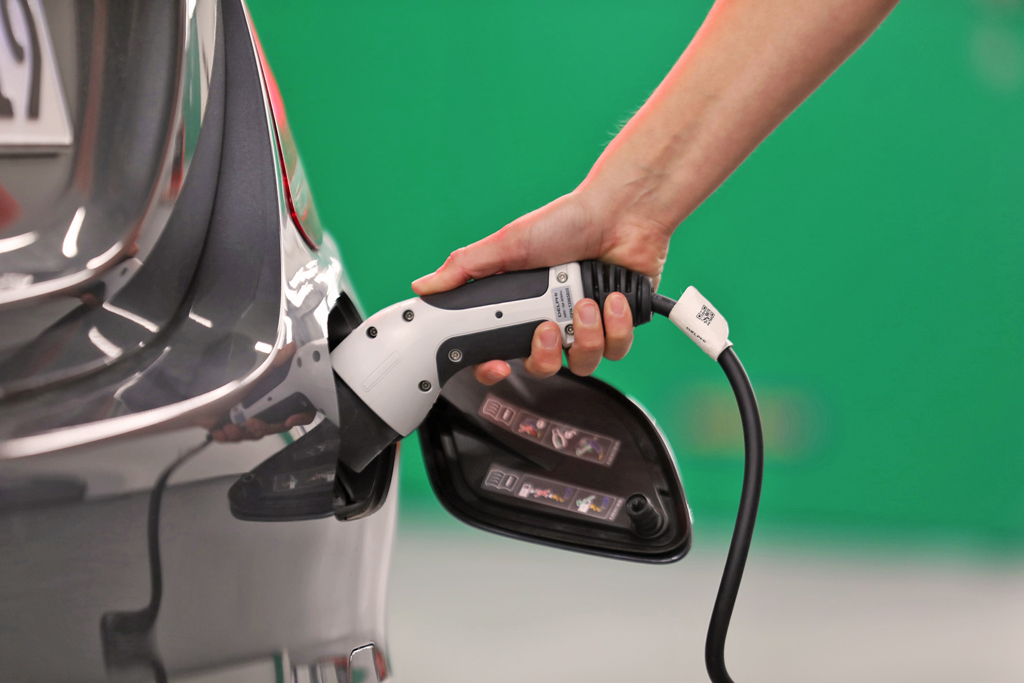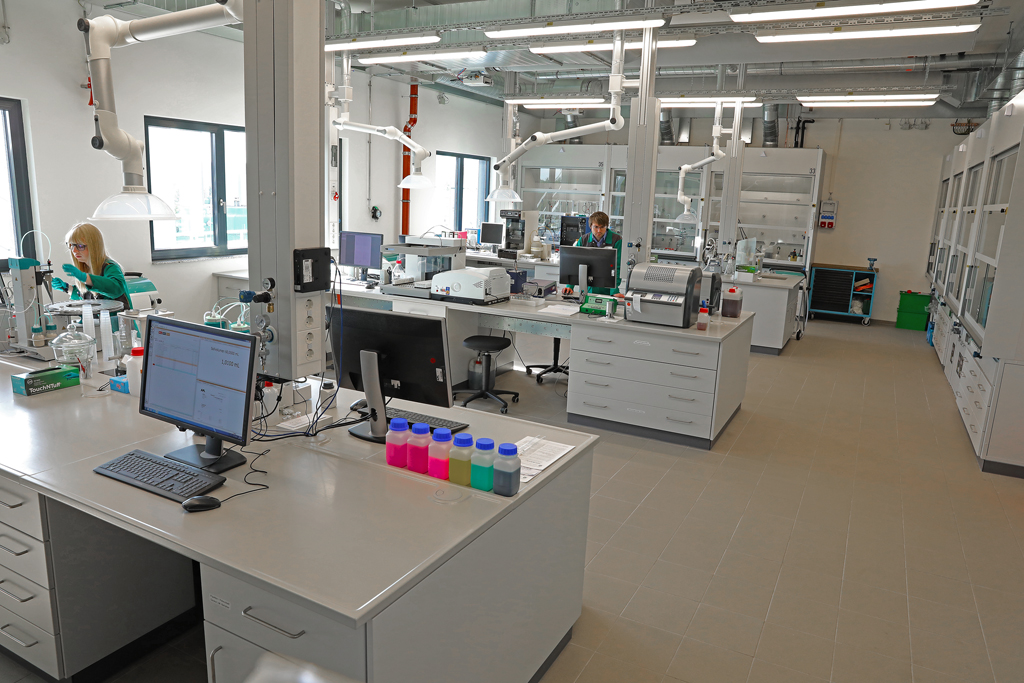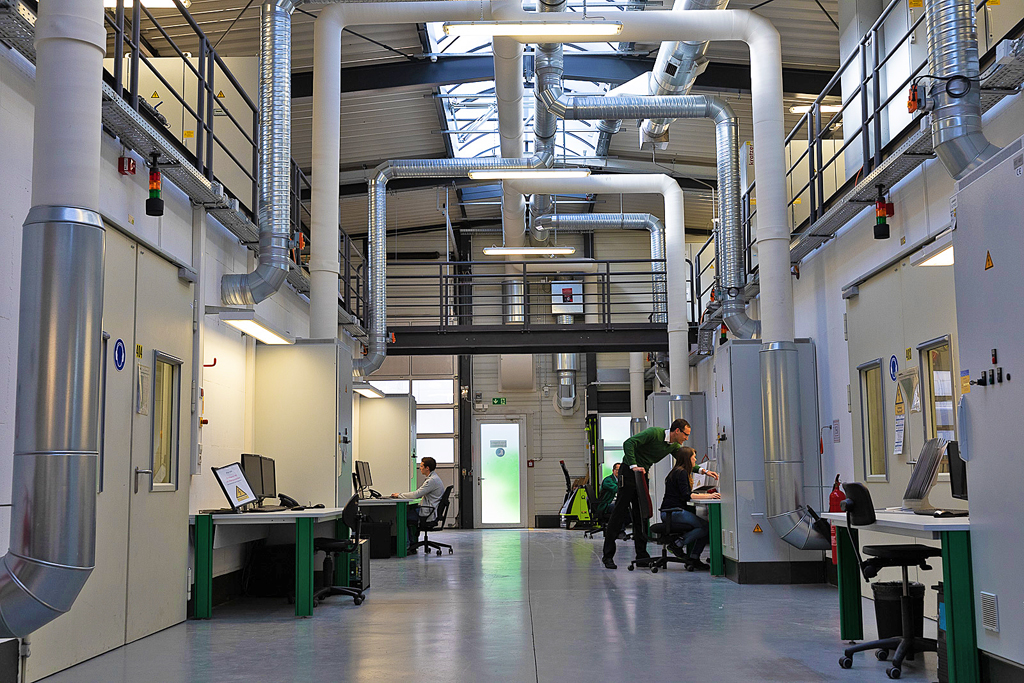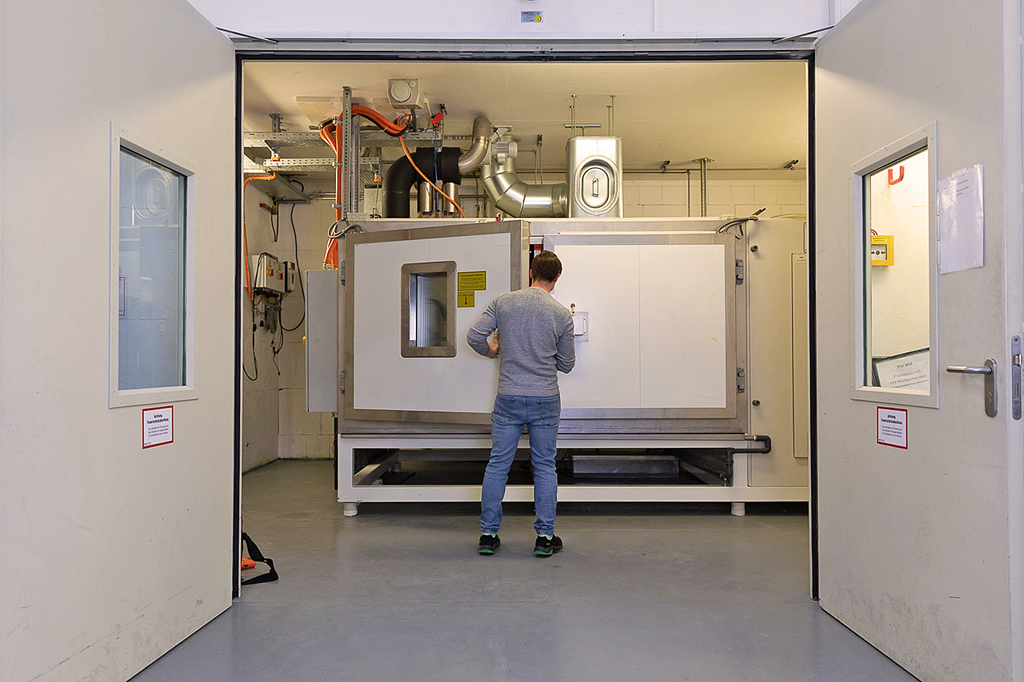// Electrified Powertrains
Alternative Powertrains — Meeting Current and Future Challenges
Project Support
- One contact person for the entire project
- Setup design and support
- Commissioning
- Test procedure programming and testing
- Test procedure optimisation and control
- Measurement data evaluation, analysis and assessment
- Troubleshooting and problem solving
- Coordination of departments and processes
- Project timeline and budget monitoring
- Daily status report
- Interface management — external and internal
- Test result documentation and presentation
Mechanical Construction
- Individual solutions for every type of construction and connection
- Wheel, cardanshaft, VKM simulation, high speed dynamometers
- Up to 5 dynamometers
- Vibration-optimised test bench construction
- Back-to-back construction with and without climate chamber/hood
- 0° shaft alignment
- Rotation speeds up to 24,000rpm
- Torques up to at least 2,500Nm
Electrical Construction
- Production of wiring looms and either direct connection or via contactor boxes
- Tests with your or an APL converter
- Currents (DC) of 600A /1200A (with parallel connection) with high dynamics (0 è 100A in 0.3 ms)
- Electrical power (DC) of 150kW / 300kW (with parallel connection)
- Maximum voltages (DC) of 1,000V
- Dynamic DC supply (source/sink)
- Temperature chamber with safety technology
Measurement Technology
- Electrical power measurement; specific testers for electrical machines and complex test benches; high-precision measurement technology
- HBM T12 torque measurement with various measurement ranges
- Power measuring devices
- Storage oscilloscopes
- Vibration measurement technologies (e.g. Reilhofer or Müller BBM)
- Sniffer measuring device
- Insulation and winding resistance measurements
- Motor testing equipment (Schleich GLP1‑e HV)
- HV-safe evaluation units
- Rotor measurement by means of 3D measuring machine
- Positioning of measurement technology close to test specimen
- High reproducibility
- Continuous recording of measurement values up to 1kHz
- Postmortem measurement data
Additional Aggregates
- Additional measuring technology and conditioning can be used project-dependently; media conditioning is adapted to the requirements
- Independent conditioning LE / EM (-40°C — + 130°C)
- Oil conditioning
- Circulating air conditioning (-40°C — + 180°C) by means of climate chamber or climate hood
Automation
- Control engineers for prompt, project-specific adjustments
- Flexible control
- Automated conditioning and mapping measurements (with reference point monitoring)
- Restbus simulation
- Battery simulation:
- With an electrical simulation model, the charge and discharge of Li-Ion batteries can be modeled. This way, within the test setup (e.g. hybrid drive), the Li-ion battery is completely replaced by a controllable DC voltage supply.
- CAN restbus simulation for battery control unit
- Driving resistance
- Automated driving
- Time-optimised testing
Durability Testing
Highly dynamic situations can be simulated using DC power supplies and test rig machines. In addition, automated running of characteristic diagrams and intermediate measurements are performed. The basic conditions — for example, influence of ambient temperature (-40°C — 150°C) or humidity — can be easily adjusted. It’s also possible to integrate special conditioning, aggregates, or special measurement technology at any time.
Functional Investigations
Usually, these tests are very time-consuming and require a lot of fundamental knowledge, as they’re neither tried and tested specimens nor standard procedures. The tests include mapping measurement, maximum characteristic curves (including S1 operation), short-circuit and no-load characteristic curves, back-EMF measurement, transient load behaviour, thermal investigations and others. Often, these tests are also used to calibrate a test item or to check the application.
Environment Simulation
Type Approval, COP and EOL
Conformity of Production (COP) is carried out during the production cycle in order to ensure key performance of the electric machine as determined during type approval.
End-of-line (EOL) tests are primarily used for quality assurance and are carried out at the end of a product manufacturing process. We can offer these tests during the development process.
Back-to-Back / Back-to-Front
Simulation Vehicle / Road / Driver
The real-world efficiencies, the total energy demand, the thermal behaviour and the durability test play a major role here.
Investigating Coolants and Lubricants (e‑fluids)
2WD / 4WD
- complete vehicle drivetrains (4‑machine superstructures incl. battery or battery simulation), two-machine superstructures (e.g. for axle tests) or
- test bench setups can be tested with only one dynamometer for pure electric motors. As a rule, we can realise any and all customer requirements.
Related Topics:

Development of Electric Powertrains

Chemical and Physical Laboratory
// Locations
Headquarters Landau
APL Automobil-Prüftechnik
Landau GmbH
Am Hölzel 11
76829 Landau
// Wolfsburg
APL Automobil-Prüftechnik
Landau GmbH
Gustav-Hertz-Straße 10
38448 Wolfsburg
// Bietigheim-Bissingen
APL Automobil-Prüftechnik
Landau GmbH
Robert-Bosch-Straße 12
74321 Bietigheim-Bissingen
// APL Group
@2022 APL Automobil-Prüftechnik Landau GmbH | Imprint | Privacy policy












